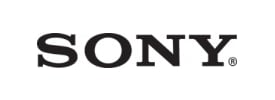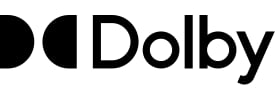Glossary of Terms
The table below lists all terms defined in ATSC 1.0 Standards. The “Source” column refers to the document in which the acronym is defined.
| Entry | Source | Definition |
|---|---|---|
| ACAP application | 101 | An application that is written only to the interfaces andsemantic guarantees defined in ACAP. A suitably signaled ACAP application will run on any terminal that complies to an ACAP terminal specification. |
| ACAP terminal | 101 | A terminal or other device that conforms to an ACAP Terminal Specification. |
| ACAP terminal specification | 101 | An ACAP terminal specification is a specification that includes all normative and selected optional elements of its underlying ACAP specification, and provides additional specifications as required |
| ACAP application | 101 | An application that is written only to the interfaces and semantic guarantees defined in ACAP. A suitably signaled ACAP application will run on any terminal that complies to an ACAP terminal specification. |
| ACAP terminal | 101 | A terminal or other device that conforms to an ACAP Terminal Specification. |
| ACAP terminal specification | 101 | An ACAP terminal specification is a specification that includes all normative and selected optional elements of its underlying ACAP specification, and provides additional specifications as required |
| access unit | 53, 54 | A coded representation of a presentation unit. In the case of audio, an access unit is the coded representation of an audio frame. In the case of video, an access unit includes all the coded data for a picture, and any stuffing that follows it, up to but not including the start of the next access unit. If a picture is not preceded by a group_start_code or a sequence_header_code, the access unit begins with a picture start code. If a picture is preceded by a group_start_code and/or a sequence_header_code, the access unit begins with the first byte of the first of these start codes. If it is the last picture preceding a sequence_end_code in the bit stream all bytes between the last byte of the coded picture and the sequence_end_code(including the sequence_end_code) belong to the access unit. |
| action | 93 | A trigger semantic that implies some behavior on the receiver without any associated data item. |
| activation | 93 | The process of enabling the target referenced by a trigger which may cause rendering. For a trigger referring to graphic data, activation might cause the rendering of a graphical object on the screen. For a trigger referring to audio data, activation might cause the emission of the appropriate sounds. |
| activation time | 93 | The System Time Clock instant at which the target of a trigger is activated. |
| active object content | 100 | A category of content types which includes both application/java and application/javatv-xlet content types. |
| aligned | 95 | A bit in a coded bit stream is byte-aligned if its position is a multiple of 8-bits from the first bit in the stream. |
| anchor element | 85 | The perceptual loudness reference point or element around which other elements are balanced in producing the final mix of the content, or that a reasonable viewer would focus on when setting the volume control. |
| anchor frame | 53, 54 | A video frame that is used for prediction. I-frames and P-frames are generally used as anchor frames, but B-frames are never anchor frames. |
| application | 90,94 | An aggregation of related data items, including but not limited to: procedural code, declarative data, and other data. |
| application activation | 100 | The process of transitioning an application’s lifecycle state from the initialized to the active state, a process which entails decoding the application initial entity. |
| application delivery file system | 100 | An optional file system provided by the application delivery system; an application delivery file system may be mounted (logically attached) to a directory of the local file system; in general, all nodes (directories and files) of an application delivery file system are constrained to support only read access. |
| application delivery system | 100 | A mechanism by which an application is announced and signaled, and has its resources delivered to an application environment. |
| application emission policy | 100 | A set of rules for determining grantable permissions based on conditions defined by the application emitter. |
| application emitter | 100 | The entity which controls the emission of applications through mechanisms implemented by an application delivery system; for example, a terrestrial broadcaster. |
| application entity | 100 | A unit of information that expresses some portion of an application. |
| application entity collection | 100 | A collection of application entities which expresses an application as a whole. |
| application environment | 95 | The context (client system) in which an application is processed. |
| application environment: | 100 | The context (system) in which an application is processed. |
| application identifier | 93 | A globally unique identifier of an application that is used for binding triggers to applications. |
| application initial entity | 100 | The application entity which is initially decoded during application activation processing. |
| application initialization | 100 | The process of transitioning an application’s lifecycle state from the uninitialized to the initialized state, a process which entails decoding the application root entity. |
| application resource | 100 | A bit-stream serialization (a physical embodiment) of an application entity; an application resource may be of bounded (determinate) or unbounded (indeterminate) length; an application resource may be manifest or implied. |
| application resource | 94 | A bit-stream serialization (a physical embodiment) of a part of an application that implements one of the data models defined in this document (A/94). |
| application resource collection | 100 | The set of application resources which embody an application entity collection. |
| application resumption | 100 | The process of transitioning an application’s lifecycle state from the suspended to the active state. |
| application root entity | 100 | A specific element of an application entity collection which is processed before all other elements in the collection during application initialization processing. |
| application termination | 100 | The process of transitioning an application’s lifecycle state from to the uninitialized state. |
| application-defined facility | 100 | A facility defined by a DASE application. |
| ARM data application | 100 | A data application as defined by ATSC A/94. |
| asynchronous data | 90, 94 | Stand-alone or audio/video-related data transmitted with no strong timing requirements in the sense that it is not associated with any transmitted clock references and availability of data in a data receiver is not governed by any such clock references. |
| asynchronous transfer mode | 53, 54 | A digital signal protocol for efficient transport of both constant-rate and bursty information in broadband digital networks. The ATM digital stream consists of fixed-length packets called “cells,” each containing 53 8-bit bytes—a 5-byte header and a 48-byte information payload. |
| asynchronous trigger | 93 | A structure transmitted within an MPEG-2 transport stream containing a reference to a target and some opaque user data bytes which may also include a reference to an application that is intended to process it. |
| ATSC Professional Integrated Receiver/Decoder | 79 | A device employed in a broadcast station, MVPD headend or similar professional location, which has the capability to produce NTSC or SDI video, with associated audio and data, from all ATSC standard formats. |
| ATSC transport | 57 | The ATSC MPEG-2 Transport Stream as defined in ATSC A/53, Part 3. |
| attribute | 76 | A qualifier on an XML tag that provides additional information. |
| audio block | 52 | A set of 512 audio samples consisting of 256 samples of the preceding audio block, and 256 new time samples. A new audio block occurs every 256 audio samples. Each audio sample is represented in two audio blocks. |
| audio-visual event | 90 | An event where elementary streams are all of type video or audio. |
| audio-visual work | 57 | A sequence of related images, with or without accompanying sound, which is intended to be made visible as a moving image through the use of devices, regardless of the medium of initial or subsequent fixation. |
| authorization | 100 | The process of determining if a privileged operation is permitted. |
| authorized operation | 100 | An unprivileged operation or a privileged operation for which permission has been granted. |
| automation event | 76 | An entry in a playlist that triggers an action by an automation system to initiate playback, start a machine, switch a signal, control an effect, change a configuration, or other action that changes the content or configuration of a program output channel. |
| bar data | 79 | Additional information which accompanies AFD data providing exact sizes of either top and bottom bars or side bars for image aspect ratios other than 4:3 or 16:9, such as widescreen movies. |
| base PID | 69 | A packet identifier of fixed value 0x1FFB. |
| beacon mode | 82 | The initial (default) operating mode of the DRL system in which the communication link is established and the general operating parameters are set. |
| bi-directional picture | 53, 54 | Pictures that use both future and past pictures as a reference. This technique is termed bidirectional prediction. B-pictures provide the most compression. B-pictures do not propagate coding errors as they are never used as a reference. |
| bin | 52 | The number of the frequency coefficient, as in frequency bin number n. The 512 point TDAC transform produces 256 frequency coefficients or frequency bins. |
| binding | 95 | A binding is a collection of bytes in a directory object that defines an association between a name and a reference (IOR) to an object. A binding may also contain descriptive information about the bound object. |
| binding name | 95 | The name that appears in a binding. |
| binding structure | 95 | The DirectoryMessageBody() of a directory object, consisting of a list of bindings associating object names with their locations. |
| BIOP object | 95 | An object formatted according to the generic BIOP message structure defined in the DSMCC. |
| bit rate | 53, 54, 90, 92 | The rate at which the bit stream is delivered from the channel to the input of a decoder. |
| block | 53, 54 | A block is an 8-by-8 array of pel values or DCT coefficients representing luminance or chrominance information. |
| bounded resource | 100 | An application resource of determinate length. |
| broadcast system | 153 | The collection of equipment necessary to transmit signals of a specified nature. |
| BS.1770 | 85 | This specifies an algorithm that provides a numerical value indicative of the perceived loudness of the content that is measured. Loudness meters and measurement tools which have implemented the BS.1770 algorithm will report loudness in units of “LKFS”. |
| buried spread spectrum | 82, 110 | A technique permitting carriage of data in the same spectrum with, but without interference to, another signal by transmitting that data at a much reduced level relative to the primary signal and using coding techniques to permit its recovery with adequate signal-to-noise ratio. |
| bury ratio | 110 | The ratio, normally expressed in dB, between the average power of the primary 8-VSB signal and the power of a buried spread spectrum sharing the same channel. |
| byte-aligned | 53, 54, 90, 92 | A bit in a coded bit stream is byte-aligned if its position is a multiple of 8-bits from the first bit in the stream. |
| candidate specification | 100 | A specification under scrutiny or consideration for some purpose. |
| canvas | 153 | The on-screen area in which OMA-RME user experience elements can be placed. Typically the canvas size will match that of the video layer. |
| carousel | 95 | A carousel identifies a group of objects transmitted repeatedly from a particular service provider for a specific purpose (service). |
| carousel | 97 | A download scenario where the modules are repeated. |
| CDATA | 76 | A predefined XML tag for Character DATA that says, “don’t interpret these characters”, as opposed to Parsed Character Data (PCDATA), in which the normal rules of XML syntax apply. |
| certification | 100 | The process of granting a certificate of compliance to a compliant application or a compliant system; in general, such a process is a legal or a business related process, not a technical process. |
| channel | 53, 54, 94 | A digital medium that stores or transports a digital television stream. |
| clear-to-air service | 153 | A service that is sent unencrypted, and may be received via any suitable receiver with or without a subscription. |
| coded representation | 53, 54 | A data element as represented in its encoded form. |
| coefficient | 52 | The time domain samples are converted into frequency domain coefficients by the transform. |
| communication channel | 90, 96 | A digital medium that transports a digital stream. A communication channel can be uni-directional or bi-directional. |
| compliance testing | 100 | The process of determining that an application or system complies (is in compliance) with a conformance statement which applies to a candidate specification. |
| compliant | 100 | The state of having satisfied a compliance testing process. |
| compliant application | 100 | An application which has undergone compliance testing and has been determined to be in compliance with a conformance statement which applies to a candidate specification. |
| compliant system | 100 | A system which has undergone compliance testing and has been determined to be in compliance with a conformance statement which applies to a candidate specification. |
| compression | 53, 54 | Reduction in the number of bits used to represent an item of data. |
| conformance | 100 | A specification of a conformance statement. |
| conformance criteria | 100 | The individual assertions that compose a conformance statement. |
| conformance statement | 100 | A set of assertions which defines adherence to a candidate specification. |
| constant bit rate | 53, 54, 90 | Operation where the bit rate is constant from start to finish of the bit stream. |
| content | 57 | An audiovisual work. |
| content | 76 | Essence plus its metadata. |
| content | 85 | Material or essence used for distribution by an operator. |
| content | 94 | A general term which refers to either an application or application resource. |
| content | 100 | An unspecified unit of information; the essential nature or character of some material; for example, streaming video content and markup content. |
| content ID | 76 | A label for content. This may take the form of a global label such as ISAN, or a “house number”. |
| content processor | 100 | An identifiable component of an application environment which decodes or executes a specific content type. |
| content type | 95 | A content-type is the top-level media type used to declare the general type of data. A subtype is used to convey a specific format for that type of data. For example, a media type of “image/xyz” indicates that the data is an image, even without knowledge of the specific image format “xyz”. |
| content type | 100 | A specific type of content identified by a MIME media type; a (metadata) property of an application resource. |
| conventional definition television | 54 | This term is used to signify the analog NTSC television system as defined in ITU-R Recommendation 470. See also standard definition television and ITU-R Recommendation 1125. |
| coupled channel | 52 | A full bandwidth channel whose high frequency information is combined into the coupling channel. |
| coupling band | 52 | A band of coupling channel transform coefficients covering one or more coupling channel sub-bands. |
| coupling channel | 52 | The channel formed by combining the high frequency information from the coupled channels. |
| coupling sub-band | 52 | A sub-band consisting of a group of 12 coupling channel transform coefficients. |
| DASE Application | 100 | A collection of information that expresses a specific set of externally observable behavior. |
| DASE content | 100 | A DASE Application or the content that composes the application. |
| DASE Extension | 100 | A well-defined set of functionality that extends the DASE Standard; an extension may be qualified as a standard extension, if defined by the ATSC, or a non-standard extension, if defined by a third party. |
| DASE level | 100 | A particular specification of the DASE Standard within a series of DASE Standards that specify functional supersets of prior DASE levels. |
| DASE receiver | 100 | A physical embodiment of the DASE System. |
| DASE Standard | 100 | The set of specifications, formally enumerated in the body of this specification (Part 1), that compose the ATSC Standard known as DASE (DTV Application Software Environment). |
| DASE System | 100 | A collection of logical components which supports the processing and presentation of DASE Applications. |
| DASE trigger | 100 | A bounded application resource which is asynchronously delivered to an active DASE Application; a DASE trigger is typically generated by an application emitter to cause some behavior in an active DASE Application. |
| data access unit | 90, 93 | The portion of a synchronized or synchronous data elementary stream that is associated with a particular MPEG-2 presentation time stamp. |
| data carousel | 90, 96 | The scenario of the DSM-CC User-to-Network Download Protocol that embodies the cyclic transmission of data. |
| data element | 53, 54 | An item of data as represented before encoding and after decoding. |
| data element | 90 | A self-contained subset of a data elementary stream. |
| data elementary stream | 90, 92 | The payloads of a series of consecutive MPEG-2 transport streams packets referenced by a unique PID value. |
| data essence | 100 | Content of an indeterminate type. |
| data field sync | 110 | The data segment added by the modulator that includes mode indicators, training signals for receiver adaptive equalizers, and similar information, and that serves as the starting point for the data processing functions that start from known states. Depending upon the context, the term can apply to Data Field Sync data segments having the middle PN-63 sequence in either phase, or it can apply only to the Data Field Sync data segments that alternate with Data Frame Sync data segments. |
| data frame sync | 110 | The Data Field Sync data segment in which the middle PN-63 sequence is not inverted relative to the two adjacent PN-63 sequences. |
| data module | 90 | An ordered sequence of bytes of a bounded size. |
| data module | 93 | The fundamental data entity resulting from the in-order re-assembly of the payload of the DSM-CC downloadDataBlock messages pertaining to the same downloadId, moduleId, and moduleVersion field values. |
| data receiver | 90, 92, 95 | Any device capable of receiving and consuming data carried on an MPEG-2 transport stream. |
| data segment | 110 | A part of the data framing structure, comprising 832 total symbols, that begins with a Data Segment Sync word, represented by four transmitted 2-level symbols, and carries 828 symbols of payload thereafter. |
| data service | 90, 92, 94, 95 | A collection of applications and associated data elementary streams as signaled in a data service table of the service description framework. A data service is characterized by a profile and a level. |
| data source | 90, 92, 95 | The provider of data that is being inserted into the MPEG-2 transport stream. |
| datagram | 90, 92, 94, 96 | A datagram is the fundamental protocol data unit in a packet-oriented data delivery protocol. Typically, a datagram is divided into header and data areas, where the header contains full addressing information (source and destination addresses) with each data unit. Datagrams are most often associated with connectionless network and transport layer services. |
| declarative application | 100 | An application which primarily makes use of declarative information to express its behavior; an XDML document instance is an example of a declarative application. |
| declarative application environment | 100 | An environment that supports the processing of declarative applications; an XDML user agent (browser) is an example of a declarative application environment. |
| declarative information | 100 | Information expressed in the form of assertions; e.g., P is, Q is, R is, or, more succinctly, {P, Q, R}. |
| decoded stream | 53, 54, 90, 92, 95 | The decoded reconstruction of a compressed bit stream. |
| decoder | 53, 54, 90, 92, 93, 95 | An embodiment of a decoding process. |
| decoding (process) | 53, 54, 95 | The process defined in the Digital Television Standard that reads an input coded bit stream and outputs decoded pictures and audio samples. |
| decoding (process) | 90, 92, 93 | The process defined in the Digital Television Standard that reads an input coded bit stream and outputs decoded pictures, audio samples, or data objects. |
| decoding time-stamp (DTS) | 53, 54 | A field that may be present in a PES packet header that indicates the time that an access unit is decoded in the system target decoder. |
| delay spread | 110 | The difference in arrival times at a point in space or at a receiver input of a signal and its significant echoes or of signals emitted by different transmitters. |
| descriptor | 65, 69 | A data structure of the format: descriptor_tag, descriptor_length, and a variable amount of data. The tag and length fields are each 8 bits. The length specifies the length of data that begins immediately following the descriptor_length field itself. A descriptor whose descriptor_tag identifies a type not recognized by a particular decoder shall be ignored by that decoder. Descriptors can be included in certain specified places within PSIP tables, subject to certain restrictions . Descriptors may be used to extend data represented as fixed fields within the tables. They make the protocol very flexible since they can be included only as needed. New descriptor types can be standardized and included without affecting receivers that have not been designed to recognize and process the new types. |
| D-frame | 53, 54 | Frame coded according to an MPEG-1 mode which uses DC coefficients only. |
| dialoglLeve | 85 | The loudness, in LKFS units, of the Anchor Element |
| dialnorm | 85 | An AC-3 metadata parameter, numerically equal to the absolute value of the Dialog Level, carried in the AC-3 bit stream. This unsigned 5-bit code indicates how far the average Dialog Level is below 0 LKFS. Valid values are 1–31. The value of 0 is reserved. The values of 1 to 31 are interpreted as –1 to –31. The decoder applies an amount of gain reduction equal to the difference between -31 and the dialnorm value. |
| digital channel | 65 | A set of one or more digital elementary streams. (See virtual channel.) |
| digital storage media (DSM) | 54 | A digital storage or transmission device or system. |
| directory link | 95 | An alternative term for a binding. |
| directory path | 95 | A sequence of directory links, in which for each link in the sequence except the last one the object referenced by the link is the directory containing the next link in the sequence. |
| discrete cosine transform | 53, 54 | A mathematical transform that can be perfectly undone and which is useful in image compression. |
| Dolby E | 85 | Dolby E is an audio data-rate reduction technology designed for use in contribution and distribution, which also conveys Dolby E metadata. |
| Dolby E metadata | 85 | Metadata that is multiplexed into the Dolby E bitstream. Each metadata element is classified as either a Professional or Consumer type of metadata. Dolby E metadata is documented in SMPTE RDD 6. |
| download scenario | 97 | The collection of DSM-CC control and data messages with the same DownloadID value.
|
| downmixing | 52 | Combining (or mixing down) the content of n original channels to produce m channels, where m<n. |
| DRC profile | 85 | A collection of parameters that describe how dynamic range control metadata is calculated. |
| earliest activation time | 93 | The earliest activation time is the earliest System Time Clock instant at which a specific target is activated using all emitted triggers (both asynchronous and synchronized). |
| earliest target acquisition time | 93 | The target acquisition time of the first instance of a target transmitted by means of one of the asynchronous delivery protocols specified in ATSC Standard A/90. |
| editing | 53, 54 | A process by which one or more compressed bit streams are manipulated to produce a new compressed bit stream. Conforming edited bit streams are understood to meet the requirements defined in the Digital Television Standard. |
| effective permissions | 100 | A set of granted permissions which apply to an application instance. |
| elementary stream (ES) | 53, 54, 92, 93, 95 | A generic term for one of the coded video, coded audio or other coded bit streams. One elementary stream is carried in a sequence of PES packets with one and only one stream_id. |
| elementary stream clock reference (ESCR | 53, 54 | A time stamp in the PES Stream from which decoders of PES streams may derive timing. |
| embedded Xlet | 100 | An Xlet that was loaded as a result of processing a markup content entity referenced by a declarative application; an embedded Xlet is specified by means of an XDML object element. |
| encoder | 53, 54 | An embodiment of an encoding process. |
| encoding (process) | 53, 54, 90, 92 | A process that reads a stream of input pictures or audio samples and produces a valid coded bit stream as defined in the Digital Television Standard. |
| encyrption | 70 | The method of protecting EMM and ECM messages by cryptographic methods. |
| end-user | 100 | The individual operating or interacting with a receiver. |
| entitlement control message (ECM) | 54 | Entitlement control messages are private conditional access information which specify control words and possibly other stream-specific, scrambling, and/or control parameters. |
| entitlement management message (EMM) | 54 | Entitlement management messages are private conditional access information which specify the authorization level or the services of specific decoders. They may be addressed to single decoders or groups of decoders. |
| entropy coding | 53, 54 | Variable length lossless coding of the digital representation of a signal to reduce redundancy. |
| entry point | 53, 54 | Refers to a point in a coded bit stream after which a decoder can become properly initialized and commence syntactically correct decoding. The first transmitted picture after an entry point is either an I-picture or a P-picture. If the first transmitted picture is not an I-picture, the decoder may produce one or more pictures during acquisition. |
| environment resource | 100 | A physical or logical component of an application environment; e.g., a region of the graphics frame buffer, an input device, a shared semaphore, a memory pool, etc. |
| epoch | 110 | An instant in time that is arbitrarily selected as a point of reference. |
| essence | 54, 76 | In its simplest form, essence = content – metadata. In this context, (video) essence is the image itself without any of the transport padding (H and V intervals, ancillary data, etc). |
| event | 53, 54, 153 | A collection of elementary streams with a common time base, an associated start time, and an associated end time. |
| event | 65 | A collection of associated program elements that have a common timeline for a defined period. An event is equivalent to the common industry usage of “television program.” An event may also be an analog “television program.” |
| event | 69, 90, 92 | A collection of elementary streams with a common time base, an associated start time, and an associated end time. An event is equivalent to the common industry usage of “TV program.” |
| event | 93 | A trigger that contains user-defined payload which has meaning to the receiver. |
| event | 94 | A binding of a program to a Virtual Channel at a specific time. |
| exponent set | 52 | The set of exponents for an independent channel, for the coupling channel, or for the low frequency portion of a coupled channel. |
| extension facility | 100 | A facility defined by a standardized extension to the DASE Standard. |
| facility | 100 | A non-empty collection of content types and their associated processors. |
| field | 53, 54 | For an interlaced video signal, a “field” is the assembly of alternate lines of a frame. Therefore, an interlaced frame is composed of two fields, a top field and a bottom field. |
| file-based scaling device | 85 | A device used to apply an overall gain correction to audio content stored as files. |
| forbidden | 53, 54, 90, 92, 95 | This term, when used in clauses defining the coded bit stream, indicates that the value shall never be used. This is usually to avoid emulation of start codes. |
| frame | 53, 54 | A frame contains lines of spatial information of a video signal. For progressive video, these lines contain samples starting from one time instant and continuing through successive lines to the bottom of the frame. For interlaced video a frame consists of two fields, a top field and a bottom field. One of these fields will commence one field later than the other. |
| framesyn | 85 | Short term for “frame synchronizer.” |
| free-to-air service | 153 | A service that is sent encrypted, and for which the keys for decryption are available free of charge. |
| full bandwidth (fbw) channel | 52 | An audio channel capable of full audio bandwidth. All channels (left, center, right, left surround, right surround) except the lfe channel are fbw channels. |
| GPS Time | 76 | Time signal distributed via GPS comprising number of seconds elapsed since 0000 Universal Time on January 6 1980. Offset from UTC by an integer number of seconds (currently 13) due to leap seconds added to UTC but not to GPS time. |
| grantable permission | 100 | A permission which may be granted if requested; determined by permission policy. |
| granted permission | 100 | A requested permission which is granted to a subject. |
| group | 97 | A collection of messages and modules. |
| group of pictures (GOP) | 53, 54 | A group of pictures consists of one or more pictures in sequence. |
| high level | 53, 54 | A range of allowed picture parameters defined by the MPEG-2 video coding specification which corresponds to high-definition television. |
| high-definition television | 53 | High-definition television has a resolution of approximately twice that of conventional television in both the horizontal (H) and vertical (V) dimensions and a picture aspect ratio (HxV) of 16:9. ITU-R Recommendation 1125 further defines “HDTV quality” as the delivery of a television picture which is subjectively identical with the interlaced HDTV studio standard. |
| high-definition television | 54 | High-definition television provides significantly improved picture quality relative to conventional (analog NTSC) television and a wide screen format (16:9 aspect ratio). The ATSC Standard enables transmission of HDTV pictures at several frame rates and one of two picture formats; these are listed in the top two lines of Table 5.1. The ATSC Standard also enables the delivery digital sound in various formats. |
| host | 70 | A device where module(s) can be connected. For example, a television, an integrated receiver-decoder, or a PC. |
| Huffman coding | 53, 54, 90 | A type of source coding that uses codes of different lengths to represent symbols which have unequal likelihood of occurrence. |
| hybrid application | 100 | A hybrid declarative application or a hybrid procedural application. |
| hybrid declarative application | 100 | A declarative application that makes use of active object content; an XDML document with an embedded Java Xlet is an example of a hybrid declarative application. |
| hybrid procedural application | 100 | A procedural application that makes use of markup content; a Java Xlet that creates and causes the display of an XDML document instance is an example of a hybrid procedural application. |
| implementation-defined facility | 100 | A facility defined by an implementer of a DASE System. |
| implied resource | 100 | An application resource whose content is not manifested directly to an application or application environment, but instead is visible only to the receiver platform. |
| independent channel | 52 | A channel whose high frequency information is not combined into the coupling channel. (The lfe channel is always independent.) |
| interaction channel | 96 | A digital medium that transports digital data from servers to clients and vice versa. An interaction channel is a logical construct built on top of physical channels. |
| interaction channel provider | 96 | The entity that provides access to inter-network connectivity to ITV clients. An Internet Service Provider may serve as an Interaction Channel Provider. |
| interactive content service provider | 96 | The entity that provides services to ITV clients using a two-way communication channel. |
| interoperable object reference | 95 | A data structure IOP::IOR that contains the information necessary to locate an object in a network; originally developed as part of the CORBA specification, later specialized by the ISO DSM-CC Standard to the case of an MPEG-2 broadcast network. |
| interstitial | 76 | A special kind of work of typically less than 5 minutes inserted between program segments. May comprise advertisements, promotions, or other short program material |
| intra-coded picture | 53, 54 | Pictures that are coded using information present only in the picture itself and not depending on information from other pictures. I-pictures provide a mechanism for random access into the compressed video data. I-pictures employ transform coding of the pel blocks and provide only moderate compression. |
| IP multicast application buffer | 92 | The buffer following the smoothing buffer of an MPEG-2 program element of stream_type 0x0D. The purpose of this buffer is to collect only the IP Multicast data bytes out of the smoothing buffer and to re-assemble them into complete datagrams. |
| IP multicast data stream | 92 | A collection of IP packets with the same IP multicast address and port number. |
| IP multicast service | 92 | The portion of an A/90 data broadcast service comprising the IP multicast sessions and their announcements and descriptions. |
| IP multicast stream | 153 | An IP stream in which the destination IP address is in the IP multicast address range. |
| IP multicast virtual channel | 92 | An ATSC virtual channel including an IP multicast service. The virtual channel may include other video and audio elementary streams. |
| ITV client | 96 | A software or hardware entity capable of establishing a two-way communication channel with remote servers for the purpose of exchanging data and performing interactive transactions. |
| latency | 90 | The total time from when a data object is transmitted in a MPEG-2 transport stream until the time it is fully decoded in the data receiver. |
| latest activation time | 93 | The latest activation time is the latest System Time Clock instant at which a specific target is activated using all emitted triggers (both asynchronous and synchronized). |
| IP stream | 153 | A sequence of IP datagrams with the same source IP address and the same destination IP address. |
| IPM program element | 92 | An MPEG-2 program element of stream_type 0x0D that carries IP multicast datagrams in DSM-CC addressable sections. |
| latest target acquisition time | 93 | The target acquisition time of the last instance of a target transmitted by means of one of the asynchronous delivery protocols specified in ATSC Standard A/90. |
| layback | 85 | A post-production technique where audio is re-joined with the associated video after editing, mixing, or sweetening. |
| layer | 53, 54, 90 | One of the levels in the data hierarchy of the video and system specification. |
| legacy application | 100 | Any application that is expressly marked as such in an application’s metadata resource. |
| level | 53, 54 | A range of allowed picture parameters and combinations of picture parameters. |
| level | 90 | The abstracted dimension that is used to refer to the size of the data elementary buffer in the transport system target decoder governing the delivery of data access units of a data service. |
| line | 79 | A specification of a given television scanning line number, defined in different image format standards. For NTSC, the line numbers are as defined by Figure 7 of SMPTE 170M. |
| linked | 53 | Alternative elements of a Program are “Linked” when they have identical values in the linked_component_tag field of their Enhanced Signaling Descriptors. |
| local file system | 100 | The file system provided by the local receiver platform. |
| local M/H service | 153 | A Service which appears in one and only one MH Broadcast. Typically this is a Service created by a local broadcaster which will not be transmitted by another broadcast facility other than a repeater. |
| local policy | 100 | A set of rules for determining grantable permissions based on conditions defined by both the receiver manufacturer and the end-user. |
| long form content | 85 | Show or program related material or essence. The typical duration is greater than approximately two to three minutes. |
| loudness | 85 | A perceptual quantity; the magnitude of the physiological effect produced when a sound stimulates the ear. |
| low frequency effects (lfe) channel | 52 | An optional single channel of limited (<120 Hz) bandwidth, which is intended to be reproduced at a level +10 dB with respect to the fbw channels. The optional lfe channel allows high sound pressure levels to be provided for low frequency sounds. |
| macroblock | 53, 54 | In the advanced television system a macroblock consists of four blocks of luminance and one each Cr and Cb block. |
| main level | 53, 54 | A range of allowed picture parameters defined by the MPEG-2 video coding specification with maximum resolution equivalent to ITU-R Recommendation 601. |
| main profile | 53, 54 | A subset of the syntax of the MPEG-2 video coding specification that is expected to be supported over a large range of applications. |
| major channel | 69 | The first number in a two-part number used to identify a virtual channel. Each virtual channel carries one service, such as a television program. The major channel in the U.S. for current NTSC broadcasters is usually their NTSC channel number. |
| manifest resource | 100 | An application resource whose content is manifested directly to an application or an application environment. |
| markup | 100 | Text that is added to the primary information content of a document in order to convey information about that content. |
| markup content | 100 | A type of content which takes the form of a markup language; an XDML document is an example of markup content. |
| markup language | 100 | A formalism that describes a class of documents which employ markup in order to delineate the document’s structure, appearance, or other aspects; XDML is an example of a markup language. |
| maximum target acquisition period | 93 | The period between the earliest target acquisition time and the latest activation time for a specific target using all emitted triggers. |
| maximum transmission uni | 90, 92 | The largest amount of data that can be transferred in a single unit across a specific physical connection. When using the Internet Protocol, this translates to the largest IP datagram size allowed. |
| measured loudness | 85 | The magnitude of an audio signal when measured with equipment that implements the algorithm specified by ITU-R BS.1770. It is an approximation of perceived loudness. |
| metadata | 76 | Information about essence. |
| metadata | 76 | Information about data essence; a type of content which describes content. Metadata may also be construed as data essence in certain contexts; that is, the relationship between metadata and data essence is mutually recursive. |
| M/H block | 153 | A defined series of contiguous transmitted VSB data segments within an M/H Group, containing M/H data or a combination of main (legacy) and M/H data. |
| M/H broadcast | 153 | The entire M/H portion of a physical transmission channel. |
| M/H ensemble (or simply “ensemble”) | 153 | A collection of consecutive RS Frames with the same FEC coding, wherein each RS Frame encapsulates a specific number of data bytes arranged in datagrams. |
| M/H frame | 153 | Time period that carries main ATSC data and M/H data (encapsulated as MHE packets) equal in duration of exactly 20 VSB data frames (~968 msec.). |
| M/H group | 153 | At the MPEG-2 transport stream level, a collection of 118 consecutive MHE MPEG-2 transport packets delivering M/H service data; also, the corresponding data symbols in the 8-VSB signal after interleaving and trellis coding. |
| M/H group region (or simply “group region”) | 153 | A defined set of M/H Blocks, designated as Region A, B, C, or D. |
| M/H multiplex | 153 | A collection of M/H Ensembles in which the IP addresses of the IP streams in the M/H Services in the Ensembles have been coordinated to avoid any IP address collisions. A single M/H Multiplex may include one or more M/H Ensembles. |
| M/H parade (or simply “parade) | 153 | A collection of M/H Groups that have the same M/H FEC parameters. A Parade is contained within one M/H Frame. Each M/H Parade carries one or two M/H Ensembles. |
| M/H service | 153 | A package of IP streams transmitted via an M/H Broadcast, which package is composed of a sequence of programs which can be broadcast. |
| M/H service signaling channel | 153 | A single IP multicast stream incorporated within each M/H Ensemble, delivering M/H Service Signaling tables that include IP-level M/H Service access information. |
| M/H slot | 153 | A portion of an M/H Sub-Frame consisting of 156 consecutive MPEG-2 transport packets. A Slot may consist solely of all TS-M (main) packets or may consist of 118 M/H packets and 38 TS-M packets. There are 16 M/H Slots per M/H Sub-Frame. Note: TS-M is Transport Stream Main as defined in A/53 Part3:2007. |
| M/H sub-frame | 153 | One fifth of an M/H Frame; each M/H Sub-frame is equal in duration to 4 VSB data frames (8 VSB data fields). |
| M/H TP | 153 | The term “M/H Transport Packet (M/H TP)” is used to designate a row of an RS Frame with two bytes header included. Thus, each RS Frame is composed of 187 M/H TPs |
| MIME media type | 100 | A specification of a type of essence, the syntax of which is defined by MIME. |
| minimum target acquisition period | 93 | The time period between the latest possible target acquisition time and the earliest possible activation time for a specific target. |
| minor channel | 69 | The second number in a two-part number used to identify a virtual channel. The minor number changes for each different service that is or will be presented in a DTV transport stream. |
| mixing leve | 85 | An optional metadata parameter in the AC-3 bit stream that allows indication of the absolute sound pressure level calibration of the mixing studio that produced the content. |
| modulation error ratio | 82 | A measure of the constellation cluster variance due to any impairment imperfections measured relative to the ideal constellation point locations. |
| module | 70 | A small device, not working by itself, designed to run specialized conditional access processing in association with a host. For example, a conditional access subsystem. |
| module | 97 | The payload data that is delivered to the receiver. |
| module delivery parameters | 95 | The delivery parameters of data modules are conveyed in DownloadInfoIndication messages. One DownloadInfoIndication message can convey the module delivery parameters of multiple data modules of the same U-U Object Carousel. |
| monomedia content type | 100 | A type of content which does not support the general embedding of other content types within its serialized or presented forms; for example, a PNG image is an instance of a monomedia content type. |
| motion vector | 53, 54 | A pair of numbers which represent the vertical and horizontal displacement of a region of a reference picture for prediction. |
| MPEG | 153 | Refers to standards developed by the ISO/IEC JTC1/SC29 WG11, Moving Picture Experts Group. MPEG may also refer to the Group. |
| multimedia content type | 100 | A type of content which supports limited or general embedding of other content types within its serialized or presented forms; for example, an XDML document is an instance of a multimedia content type. |
| multiplexer | 76 | A device that combines MPEG-2 packets from one or more elementary streams into one or more MPEG-2 transport stream outputs containing a multiplex of packets, or that combines multiple transport streams into a system level multiplex. |
| multiplexer (mux) | 90, 92, 95 | A physical device that is capable of inserting MPEG-2 transport stream packets into and extracting MPEG-2 transport stream packets from an MPEG-2 transport stream. |
| multiprotocol encapsulation | 90, 92 | The encapsulation of datagrams in addressable sections. |
| namespace | 76 | A standard that enables the definition of a unique label for the set of element names defined by a specific schema. A document using that schema can be included in any other document without having a conflict between XML element names. The elements defined in the schema are then uniquely identified so that, for example, the parser can tell when an element called <name> should be interpreted according to that schema, rather than using the definition for an element called “name” in a different schema. |
| native application | 100 | An intrinsic function implemented by a receiver platform; a close captioning display is an example of a native application. |
| network | 96 | A data carriage medium or a collection of data carriage media links used to exchange information between a service provider and one or more client agents or devices. |
| non-compliant | 100 | The state of having failed a compliance testing process. |
| non-systematic | 153 | A property of a code in which the code word does not meet the definition of a systematic code, due to either re-ordering or substitution of data. |
| NSAP address | 95 | Network Service Access Point (NSAP) consists of AFI, Type, carouselId, specifier, privateData, as specified in Figure 11-2 of DSM-CC. It is a globally unique identifier that is used to identify a particular service domain. |
| number of groups (NoG) | 153 | The number of M/H Groups per M/H Sub-Frame for a particular Ensemble. |
| object | 93 | Any arbitrary data item available to a receiver. |
| object | 95 | An object is an entity transmitted using the Object Carousel Protocol; it is a serialized object rather than an object definition. This could be raw data representing a file, a directory or a service gateway. |
| object key | 95 | A collection of bytes that uniquely identifies an object of a TSFS within the data carousel module that contains it. |
| octet | 100 | An 8-bit byte. |
| one_bits | 53 | Each bit in fields marked, one_bits, shall be set to ‘1’. |
| operator | 85 | A broadcast network, broadcast station, DBS service, local cable system, or cable multiple system operator (MSO). |
| opportunisitc data | 90 | Data inserted into the remaining available bandwidth in a given transport stream after all necessary bits have been allocated for video, audio and other services. |
| pack | 53, 54 | A pack consists of a pack header followed by zero or more packets. It is a layer in the system coding syntax. |
| packet | 53, 54 | A packet consists of a header followed by a number of contiguous bytes from an elementary data stream. It is a layer in the system coding syntax. |
| packet | 90, 92, 93, 95 | A packet is a set of contiguous bytes consisting of a header followed by its payload. |
| packet | 82, 100 | A collection of data sent as a unit, including a header to identify and indicate other properties of the data, and a payload comprising the data actually to be sent, either having a fixed, known length or having means to indicate either its length or its end. |
| packet data | 53, 54 | Contiguous bytes of data from an elementary data stream present in the packet. |
| packet identifier (PID) | 53, 54, 76, 90, 92, 93, 95 | A unique integer value used to associate elementary streams of a program in a single or multi-program transport stream. |
| padding | 53, 54 | A method to adjust the average length of an audio frame in time to the duration of the corresponding PCM samples, by continuously adding a slot to the audio frame. |
| parade repetition cycle | 153 | A specification of the frequency of transmission of a Parade carrying a particular Ensemble. The Parade containing a particular Ensemble is transmitted in one M/H Frame per PRC M/H frames, e.g., PRC= 3 implies transmission in one M/H frame out of every three M/H frames. |
| part | 53, 153 | A Part is an independently-maintainable portion of an ATSC document. It shares a common root document number with other Parts of the document. |
| PAT-E | 53 | A table with the same syntax as Program Association Table as defined by ISO/IEC IS 13818-1:2000 (E) transmitted using an enhanced VSB mode defined in Annex D of A/53. |
| payload | 53, 54 | Payload refers to the bytes which follow the header byte in a packet. For example, the payload of a transport stream packet includes the PES_packet_header and its PES_packet_data_bytes or pointer_field and PSI sections, or private data. A PES_packet_payload, however, consists only of PES_packet_data_bytes. The transport stream packet header and adaptation fields are not payload. |
| payload | 90, 92, 93, 95 | Payload refers to the bytes following the header byte in a packet. |
| PCR discontinuity | 93 | A time point at which the PCR changes by more than one unit. |
| permission | 100 | Authorization to perform a privileged operation. |
| permission policy | 100 | A set of rules for determining grantable permissions. |
| PES packet | 53, 54, 90 | The data structure used to carry elementary stream data. It consists of a packet header followed by PES packet payload. |
| PES packet header | 53, 54, 90 | The leading fields in a PES packet up to but not including the PES_packet_data_byte fields where the stream is not a padding stream. In the case of a padding stream, the PES packet header is defined as the leading fields in a PES packet up to but not including the padding_byte fields. |
| PES stream | 53, 54 | A PES stream consists of PES packets, all of whose payloads consist of data from a single elementary stream, and all of which have the same stream_id. |
| PES stream | 90 | A continuous sequence of PES packets of one elementary stream with one stream_id. |
| physical channel | 65, 69, 90 | A generic term to refer to the each of the 6–8 MHz frequency bands where television signals are embedded for transmission. Also known as the physical transmission channel (PTC). One analog virtual channel fits in one PTC but multiple digital virtual channels typically coexist in one PTC. |
| picture | 53, 54 | Source, coded, or reconstructed image data. A source or reconstructed picture consists of three rectangular matrices representing the luminance and two chrominance signals. |
| pixel | 53, 54 | “Picture element” or “pel.” A pixel is a digital sample of the color intensity values of a picture at a single point. |
| playlist | 76 | Also known as the “traffic schedule”. A sequential list of automation events to be played back for a station output channel. |
| PMT-E | 53 | A table with the same syntax as Program Map Table as defined by ISO/IEC IS 13818-1:2000 (E) transmitted using an enhanced VSB mode defined in Annex D of A/53. |
| PMT-E_PID | 53 | A PID that identifies the Transport Stream packets that carry TS_program_map_section()s in a TS-E. |
| P-picture | 53, 54 | Pictures that are coded with respect to the nearest previous I or P-picture. This technique is termed forward prediction. P-pictures provide more compression than I-pictures and serve as a reference for future P-pictures or B-pictures. P-pictures can propagate coding errors when P-pictures (or B-pictures) are predicted from prior P-pictures where the prediction is flawed. |
| preload data | 93 | DAU’s or objects accessible to the receiver delivered in advance of their activation by subsequent triggers. |
| presentation time-stamp (PTS) | 53, 54, 90 | A field that may be present in a PES packet header that indicates the time that a presentation unit is presented in the system target decoder. |
| presentation unit (PU) | 53, 54, 90 | A decoded audio access unit or a decoded picture. |
| primary DIMS stream | 153 | A stream which defines the complete scene tree; i.e., in which all random access points are, or build, a complete DIMS Scene. |
| primary ensemble | 153 | An ensemble to be transmitted through a primary RS frame of a Parade. |
| primary Xlet | 100 | The first Xlet that was loaded as a result of processing a procedural application’s initial entity. |
| principal broadcast stream | 153 | The principal broadcast service is the current broadcast audio/video service being presented by the primary video and audio decoder. |
| privileged operation | 100 | An operation which is controlled by the security framework. |
| procedural application | 100 | An application which primarily makes use of procedural information to express its behavior; a non-empty set of compiled Java Xlets is an example of a procedural application. |
| procedural application environment | 100 | An environment that supports the processing of procedural applications; a Java Virtual Machine and its public APIs constitute an example of a procedural application environment. |
| procedural information | 100 | Information expressed in the form of procedures; e.g., do F, do G, do H, or, more succinctly, <F(), G(), H()> |
| profile | 53, 54 | A defined subset of the syntax specified in the MPEG-2 video coding specification |
| profile | 90, 92, 95 | A defined subset of data delivery characteristics. |
| program | 53 | Program shall mean the collection of all elements within the emission that have the same program number, independent of the methods used to propagate the program elements. |
| program | 54 | A collection of program elements. Program elements may be elementary streams. Program elements need not have any defined time base; those that do have a common time base and are intended for synchronized presentation. |
| program | 65, 69, 90, 92, 93, 94, 95, 153 | A collection of program elements. Program elements may be elementary streams. Program elements need not have any defined time base; those that do have a common time base and are intended for synchronized presentation. The term program is also used in the context of a “television program” such as a scheduled daily news broadcast. |
| program clock reference (PCR) | 53, 54, 90, 93 | A time stamp in the transport stream from which decoder timing is derived. |
| program element | 53, 54, 76 | A generic term for one of the elementary streams or other data streams that may be included in a program. |
| program element | 65, 69, 90, 92, 93, 94, 95 | A generic term for one of the elementary streams or other data streams that may be included in a program. For example: audio, video, data, etc. |
| program map table | 53, 65 | The collection of all the TS_program_map_section()s. |
| program segment | 76 | Portion of a TV program as defined in the traffic format assigned to the program. |
| program specific information (PSI) | 53, 54 ,90, 92, 95 | PSI consists of normative data which is necessary for the demultiplexing of transport streams and the successful regeneration of programs. |
| protected content | 153 | Media Stream that is protected according to the requirements of A/153 Part 6. |
| PSIP event | 76 | A defined period of time on a virtual channel with associated metadata related to a show. |
| quantizer | 53, 54 | A processing step which intentionally reduces the precision of DCT coefficients |
| random access | 53, 54 | The process of beginning to read and decode the coded bit stream at an arbitrary point. |
| receiver | 96 | Any device capable of receiving and consuming data carried on either broadband or narrowband network. |
| reference receiver | 153 | A physical embodiment of hardware, operating system, and native applications of the manufacturer’s choice, which collectively constitute a receiver for which specified transmissions are intended. |
| region | 65, 69 | A geographical area consisting of one or more countries. |
| rely (up)on | 100 | A formulaic expression used throughout the DASE Standard to indicate the level of expectation which a DASE Application may have regarding the behavior of a DASE System; the expression shall not rely (up)on indicates that no expectation of behavior may be assumed. |
| remultiplexer | 76 | A packet multiplexer capable of combining MPEG-2 transport stream packets from one or more inputs containing a multiplex of packets into one or more MPEG-2 transport stream outp |
| requested permission | 100 | A request for authorization to perform a privileged operation. |
| reserved | 53, 54, 90, 92, 93, 95 | This term, when used in clauses defining the coded bit stream, indicates that the field may be used in the future for Digital Television Standard extensions. |
| resource | 100 | An application resource or an environment resource. |
| resource identifier | 94, 100 | An identifier which labels a resource; e.g., a URI. |
| resource reference | 94, 100 | The use of a resource identifier to refer to an application resource. |
| RF watermark | 82, 110 | A buried spread spectrum (BSS) signal carrying codes used for the purpose of identification of the host signal with which it is associated and for carrying a small amount of low speed data. |
| RI Object | 153 | A binary coded Registration Layer message or LTKM Layer message. |
| RI Stream | 153 | stream of UDP packets with the common source and destination IP addresses and UDP port, containing RI Objects. |
| rights issuer | 153 | An entity that issues Rights Objects to OMA DRM Conformant Devices. |
| rights issuer URI | 153 | A string that identifies the Rights Issuer issuing RI Objects and Service Encryption Keys (SEKs). Rights Issuer URI type is anyURI. |
| rights object | 153 | A collection of Permissions and other attributes which are linked to Protected Content. |
| RS frame | 153 | Two-dimensional data frame by means of which an M/H Ensemble is RS CRC encoded. RS Frames are the output of the M/H physical layer subsystem. Generally, one RS Frame contains 187 rows of N bytes each, where the value of N is determined by the transmission mode of M/H physical layer subsystem, and carries data for one M/H Ensemble. RS Frames are defined in detail in Part 2. |
| RS frame portion length | 153 | The number of SCCC payload bytes per Group. |
| root | 76 | The outermost element in an XML document that contains all other elements. |
| Schedule | 76 | The binding of shows to virtual channels at particular times. A schedule is the generic name for “Television Schedule” that consists of multiple audio-video presentations carried on a channel over a period of time. |
| schema | 76 | A database-inspired method for specifying constraints on XML documents using an XML-based language. Since schemas are founded on XML, they are hierarchical, so it is easy to create an unambiguous specification and possible to determine the scope over which definitions and comments are meant to apply. |
| scrambling | 53, 54, 90, 94 | The alteration of the characteristics of a video, audio or coded data stream in order to prevent unauthorized reception of the information in a clear form. This alteration is a specified process under the control of a conditional access system. |
| scrambling | 70 | The method of obscuring digital streams by cryptographic methods. |
| SDP announcement stream | 92 | A collection of session description protocol datagrams transmitted on a given IP multicast address and pertaining to the same sessionID. |
| SDP stream | 92 | The collection of one or more SDP announcement streams. |
| secondary DIMS stream | 153 | A stream that manages only a portion of the scene tree. |
| secondary ensemble | 153 | An ensemble to be transmitted through a secondary RS frame of a Parade. Depending on RS Frame Mode, a Parade may or may not have the Secondary Ensemble and associated secondary RS Frame. |
| secondary Xlet | 100 | Any Xlet explicitly registered and started by a primary Xlet, an embedded Xlet or another secondary Xlet. |
| section | 65, 69, 90, 92, 94, 95 | A data structure comprising a portion of an ISO/IEC 13818-1 or ISO/IEC 13818-6 defined table, such as the program association table (PAT), conditional access table (CAT), or program map table (PMT). All sections begin with the table_id and end with the CRC_32 field, and their starting points within a packet payload are indicated by the pointer_field mechanism defined in the ISO/IEC 13818-1 International Standard. |
| security framework | 100 | A set of services which provide protection from certain threats. |
| service | 100 | A virtual channel, as defined by ATSC A/65. |
| service description framework | 90, 92, 94, 95 | The information conveyed in the program element and providing the data service table and optionally the network resource table of a single data service. |
| service domain | 95 | A Service Domain identifies a structured group of objects. It is an abstract entity defined for the purpose of scoping. Each instance of an Object Carousel represents a Service Domain. Each Service Domain is identified by a globally unique NSAP address. Each Service Domain has a Service Gateway serving as its root directory. |
| service gateway | 95 | A Service Gateway is the one and only entry-point to the content that is broadcast by the Object Carousel. It serves as the root directory of the Object Carousel. There is a Service Gateway associated with each Service Domain. |
| service location descriptor | 93 | A descriptor specifying the stream type, PID, and language code for some of the MPEG-2 Program Elements comprising a virtual channel. |
| session | 92 | A collection of IP multicast data streams bound by a common announcement and description. Announcement and description protocols are defined in IETF RFC 2974 and IETF RFC 2327 respectively. |
| session announcement | 92 | A session announcement is a mechanism by which a session description is conveyed to users in a proactive fashion, i.e., the session description was not explicitly requested by the user. |
| session description | 92 | Information used to announce and discover a session, which may include session identification, session version, name, start and end times, and other information. |
| short form conten | 85 | Advertising, commercial, promotional or public service related material or essence. Also termed “interstitial” content. The typical duration is less than approximately two to three minutes. |
| show | 76 | The composition of the primary work and interstitials in a single timeline suitable for broadcast. |
| show segment | 76 | A contiguous subset of a show identified with a single start time and end time pair referenced to the show’s timeline. |
| slice | 53, 54 | A series of consecutive macroblocks. |
| software download data service | 97 | A data service as defined by this specification (A/97). |
| source stream | 53, 54 | A single, non-multiplexed stream of samples before compression coding. |
| spectral envelope | 52 | A spectral estimate consisting of the set of exponents obtained by decoding the encoded exponents. Similar (but not identical) to the original set of exponents. |
| splicing | 53, 54 | The concatenation performed on the system level or two different elementary streams. It is understood that the resulting stream must conform totally to the Digital Television Standard. |
| standard definition television (SDTV) | 53, 54 | This term is used to signify a digital television system in which the quality is approximately equivalent to that of NTSC. This equivalent quality may be achieved from pictures sourced at the 4:2:2 level of ITU-R Recommendation 601 and subjected to processing as part of the bit rate compression. The results should be such that when judged across a representative sample of program material, subjective equivalence with NTSC is achieved. Also called standard digital television. See also conventional definition television and ITU-R Recommendation 1125. |
| standard facility | 100 | A facility defined by the DASE Standard. |
| start codes | 53, 54, 90 | 32-bit codes embedded in the coded bit stream that are unique. They are used for several purposes including identifying some of the layers in the coding syntax. Start codes consist of a 24-bit prefix (0x000001) and an 8-bit stream_id. |
| starting group number | 153 | The Group Number assigned to the first Group in a Parade, which determines placement of the Parade into a particular series of M/H Slots. |
| STD input buffer | 53, 54, 90, 94 | A first-in, first-out buffer at the input of a system target decoder for storage of compressed data from elementary streams before decoding. |
| still picture | 53, 54 | A coded still picture consists of a video sequence containing exactly one coded picture which is intra-coded. This picture has an associated PTS and the presentation time of succeeding pictures, if any, is later than that of the still picture by at least two picture periods. |
| stream | 65, 69, 90, 92, 94, 95 | An ordered series of bytes. The usual context for the term stream is the series of bytes extracted from transport stream packet payloads that have a common unique PID value (e.g., video PES packets or program map table sections). |
| stream data | 90, 92, 94 | A stream is a data object which has no specific start or end. The decoding system may need only a small fraction of the total data to activate a given application. An example includes stock ticker services. |
| strictly compliant application | 100 | A compliant application that makes use of only standard and application-defined facilities. |
| studio-to-transmitter link | 112 | A system used to convey program-related signals or data from a studio or other origination point to the transmitter site, typically using either radio (microwave) or coax/fiber landline systems. |
| synchronization frame | 52 | A unit of the serial bit stream capable of being fully decoded. The synchronization frame begins with a sync code and contains 1536 coded audio samples. |
| synchronized data | 90 | Data that uses MPEG-2 PCRs and MPEG-2 PTSs with the objective of matching presentation and/or display of data units with access units of other streams (typically audio and video). |
| synchronized trigger | 93 | A structure transmitted within an MPEG-2 transport stream containing a the same information as an asynchronous trigger but with the addition of a PTS. |
| synchronous data | 90 | Data that uses MPEG-2 PCRs and MPEG-2 PTSs with the objective of delivering data units with timing constraints, these data units being processed for presentation and/or display as a standalone stream. |
| system clock reference (SCR) | 53, 54 | A time stamp in the program stream from which decoder timing is derived. |
| system header | 53, 54 | The system header is a data structure that carries information summarizing the system characteristics of the Digital Television Standard multiplexed bit stream. |
| system target decoder (STD) | 53, 54, 90, 94 | A hypothetical reference model of a decoding process used to describe the semantics of the Digital Television Standard multiplexed bit stream. |
| system time clock | 93 | The clock in the receiver derived from the arriving PCR values that matches the clock in the emission system. |
| Systematic | 153 | A property of a code in which the code word is composed of the original data in its sequential order followed by parity data for the codeword. |
| table | 65 | The collection of re-assembled sections bearing a common table_id and version number. Note that this definition of table constrains version-number to apply to the collection of sections as contrasted to each section. |
| table | 90, 92, 95 | The collection of re-assembled sections bearing a common version number. |
| table instance | 65, 69 | Tables are identified by the table_id field. However, in cases such as the RRT and EIT, several instances of a table may be defined simultaneously. All instances have the same PID and table_id but different table_id_extension. |
| table instance | 90, 92 | Tables are identified by the table_id field. However, in cases such as the data event table, several instances of a table are defined simultaneously. All instances are conveyed in transport stream packets of the same PID value and have the same table_id field value. Each instance has a different table_id_extension value. |
| table instance | 95 | A collection of re-assembled sections with a common table_id, table_id_extension, and version_number. Examples are the PSIP EITs and the Data Broadcasting DETs, where the source_id appears in the table_id_extension field to distinguish different instances of the tables. |
| table, PSIP | 65, 69 | A collection of tables describing virtual channel attributes, event features, and others. PSIP tables are compliant with the private section syntax of ISO/IEC 13818-1. |
| tag | 76 | A piece of text that describes a unit of data, or element, in XML. The tag is distinguishable as markup, as opposed to data, because it is surrounded by angle brackets (< and >). For example, the element |
| tap | 90, 94 | A reference to a data resource, including but not limited to: a data elementary stream, a data carousel module, or a network resource. |
| tap | 95 | A data structure used to establish a link from an object reference to a lower layer communication channel. |
| target | 93 | Pre-load data that refers to a DAU or a data object available to a receiver. |
| target acquisition time | 93 | The time instant at which the last byte of a target leaves the Transport System Target Decoder for the asynchronous MPEG-2 Program Element conveying the target. |
| time-stamp | 53, 54, 90 | A term that indicates the time of a specific action such as the arrival of a byte or the presentation of a presentation unit. |
| total number of groups | 153 | The number of Groups per M/H Sub-Frame including all M/H Ensembles present in the Sub-Frame. |
| traffic format | 76 | A defined structure that specifies for each traffic system the organization of a primary work and interstitials. A series of traffic formats linked together form a 24 hour broadcast log. Traffic formats are typically linked to a specific program. |
| traffic system | 76 | A management system comprising a database for tracking the sale of advertising, and the scheduling of program elements, advertising, promotional announcements, and other interstitial material. |
| Transport Mode | 82 | An optional, lower-power operating mode of the DRL system that may be used if the RF environment permits. Note that the initial, and default, operating mode of the DRL system is the Beacon Mode. |
| transport stream | 90, 92, 93, 94, 95, 100 | Refers to the MPEG-2 transport stream syntax for the packetization and multiplexing of video, audio, and data signals for digital broadcast systems. |
| transport stream packet header | 53, 54, 90, 92, 93, 95 | The leading fields in a transport stream packet up to and including the continuity_counter field. |
| transport system target decoder | 93 | A hypothetical reference model defined in ATSC Standard A/90 of a decoding process used to describe the semantics of the Digital Television Standard multiplexed bit stream. |
| target loudness | 85 | A specified value for the Anchor Element (i.e., Dialog Level), established to facilitate content exchange from a supplier to an operator. |
| trigger | 93 | A collective name referring to either asynchronous or synchronized triggers. |
| true peak | 85 | The maximum absolute level of the signal waveform in the continuous time domain, measured per ITU-R BS.1770. Its units are dB TP (meaning decibels relative to nominal 100%, true-peak). |
| trusted application | 101 | An application that is eligible to be trusted and to which is granted access to some sensitive resources. |
| TS-E | 53 | The portion of TS-R that contains only all Transport Stream packets transmitted by one-half rate and/or one-quarter rate modes (see Annex D of A/53). |
| TS-Ea | 53 | The portion of TS-E that contains only all Transport Stream packets transmitted by one-half rate mode (see Annex D of A/53). |
| TS-Eb | 53 | The portion of TS-E that contains only all Transport Stream packets transmitted by one-quarter rate mode (see Annex D of A/53). |
| TS-M | 53 | The portion of TS-R that contains only all Transport Stream packets transmitted by the main mode (see Annex D of A/53). |
| TS-R | 53 | The recombined Transport Stream containing all Transport Stream packets delivered by all transmission modes (main, one-half rate and one-quarter rate) (see Annex D of A/53). |
| UDP stream | 153 | A sequence of UDP/IP datagrams with the same destination IP address and the same destination UDP port number. |
| unbounded resource | 100 | An application resource of indeterminate length; e.g., a data stream. |
| uniform resource identifier | 95 | URI Uniform Resource Identifiers (URIs) provide a simple, unified and extensible mechanism for identifying a resource. The URI framework [URI] provides a way to concatenate a base-URI with a relative-URI to form an absolute URI identifying a resource. |
| unprivileged operation | 100 | An operation which is not controlled by the security framework. |
| user | 94 | The reader and/or implementer of an ATSC Standard. |
| user agent | 100 | An embodiment of a declarative application environment. |
| UTC | 76 | Coordinated Universal Time, the basis for the worldwide system of time. Determined using atomic clocks and maintained by the US Naval Observatory and other laboratories around the world. Adjusted occasionally with leap seconds to maintain synchronization with the solar day based on the rotation of the earth |
| valid XML | 76 | A valid XML document, in addition to being well formed, conforms to all the constraints imposed by a Schema. It does not contain any tags that are not permitted by the schema, and the order of the tags conforms to the schema’s specifications. |
| value | 76 | Used in XML to indicate the number or characters entered for a particular parameter or variable. |
| variable bit rate | 53, 54 | Operation where the bit rate varies with time during the decoding of a compressed bit stream. |
| vertical ancillary | 99 | In a broadcast facility, in uncompressed SDI, the Vertical ANCillary (VANC) data space is used for VBI and other non-video signals. |
| vertical blanking interval | 99 | An acronym for Vertical Blanking Interval, which is composed of the first 21 horizontal lines in each NTSC field. These lines are not intended to be directly displayed by a receiver. In digital systems, the VBI does not exist. |
| version number | 69 | A number that increments each time there is a change in a referenced table. |
| video buffering verifier (VBV) | 53, 54 | A hypothetical decoder that is conceptually connected to the output of an encoder. Its purpose is to provide a constraint on the variability of the data rate that an encoder can produce. |
| video sequence | 53, 54 | A video sequence is represented by a sequence header, one or more groups of pictures, and an end_of_sequence code in the data stream. |
| viewer | 94 | The person using a receiver to view the virtual channel. |
| virtual channel | 65, 69, 76 | A virtual channel is the designation, usually a number, that is recognized by the user as the single entity that will provide access to an analog TV program or a set of one or more digital elementary streams. It is called “virtual” because its identification (name and number) may be defined independently from its physical location. Examples of virtual channels are: digital radio (audio only), a typical analog TV channel, a typical digital TV channel (composed of one audio and one video stream), multi-visual digital channels (composed of several video streams and one or more audio tracks), or a data broadcast channel (composed of one or more data streams). In the case of an analog TV channel, the virtual channel designation will link to a specific physical transmission channel. In the case of a digital TV channel, the virtual channel designation will link both to the physical transmission channel and to the particular video and audio streams within that physical transmission channel. |
| virtual channel | 90, 92, 93, 94, 95 | A virtual channel is the designation, usually a number, that is recognized by the user as the single entity that will provide access to an analog TV program or a set of one or more digital elementary streams. It is called “virtual” because its identification (name and number) may be defined independently from its physical location. |
| virtual channel number | 95 | A virtual channel number is the designation that is recognized by the user as the single entity that will provide access to an analog TV programming or a set of one or more digital elementary streams. It is called “virtual” because its identification (name and number) may be defined independently from its physical location. |
| V-ISAN | 76 | ISAN combined with a version identifier to provide a globally unique identifier of the version of an audiovisual work |
| W3C | 76 | The World Wide Web Consortium (http://www.w3c.org/). The international body that governs Internet standards. |
| WAVE – (also WAV or .wav) | 153 | File format for storing an audio bitstream, used as de facto standard for audio storage on PCs. Based on Resource Interchange File Format (RIFF), a generic meta-format for storing data in tagged “chunks”. |
| well-formed | 76 | An XML document that is syntactically correct. To determine whether or not a well-formed document is valid, a validating parser and a schema are required. |
| window | 52 | A time vector which is multiplied by an audio block to provide a windowed audio block. The window shape establishes the frequency selectivity of the filterbank, and provides for the proper overlap/add characteristic to avoid blocking artifacts. |
| work | 57 | A version of an audiovisual work. |
| work | 76 | A completed artistic creation, produced or accomplished through the effort, activity or agency of a person or group, comprised of any combination of picture (or video) essence, sound (or audio) essence and/or data (or auxiliary) essence. |
| work segment | 76 | A contiguous subset of a work; identified with a single start time and end time pair referenced to the work’s timeline; and a defined subset of the elements of the work. |
| Xlet | 100 | An element of active object content expressed as a Java class which implements the javax.tv.xlet.Xlet interface; a collection of Java class files and possibly related resources, one class file of which implements the javax.tv.xlet.Xlet interface; a collection of resources packaged as a Java archive which embodies the functionality of an Xlet. |
| XML document | 76 | In general, an XML structure in which one or more elements can contain text intermixed with sub-elements. |
| XML element | 76 | A unit of XML data, delimited by tags which can enclose other elements. |
| XML schema | 76 | The W3C schema specification for XML documents. |
Subscribe to our Newsletter
Subscribe to The Standard, our monthly newsletter, to stay up-to-date with ATSC news and events around the world.

































